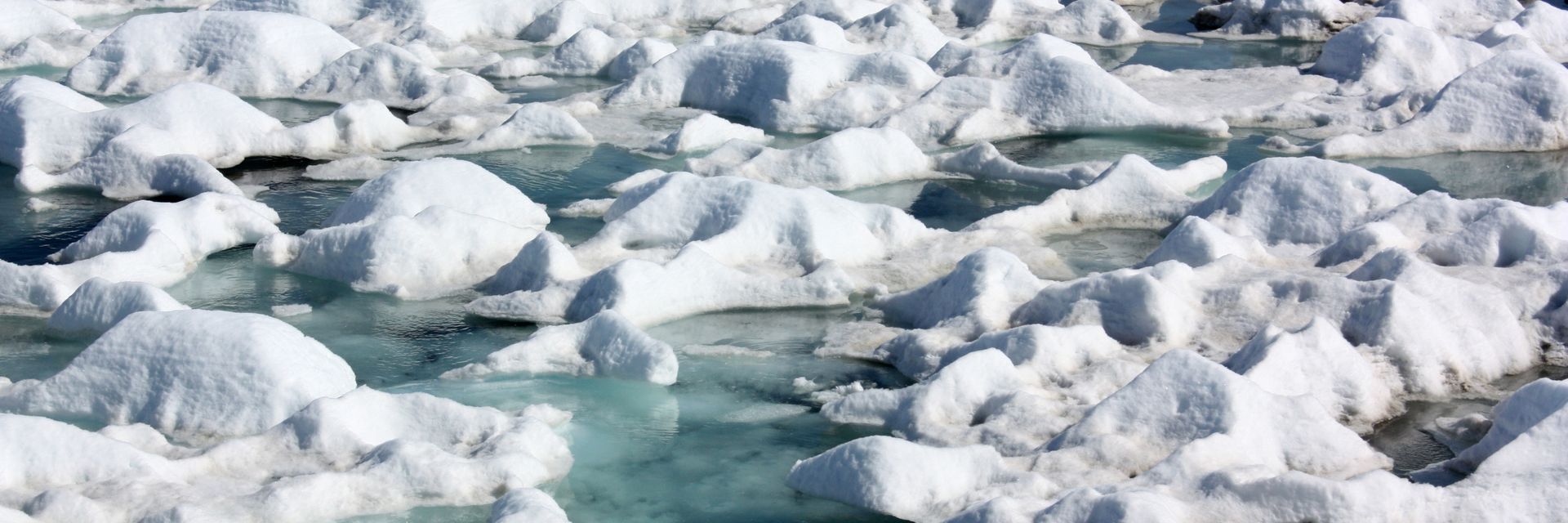Climate change is affecting the basic systems of our planet in more and more unexpected ways. Among them are the vast shifts in temperatures and weather patterns caused by a crisis at the Earth’s poles. Sea ice is disappearing at an alarming pace, and the results are many, diverse, and worrying. Here are five major impacts on the geological health of the Earth and its climate systems set off by the warming of the Arctic and Antarctic.
◊
The climate is warming worldwide, but the effects are nowhere more readily apparent than at our planet’s poles. Early in 2020, during the Southern Hemisphere’s mid-summer season, parts of Antarctica had an extended “heat wave” during which the highest temperatures ever measured there were recorded.
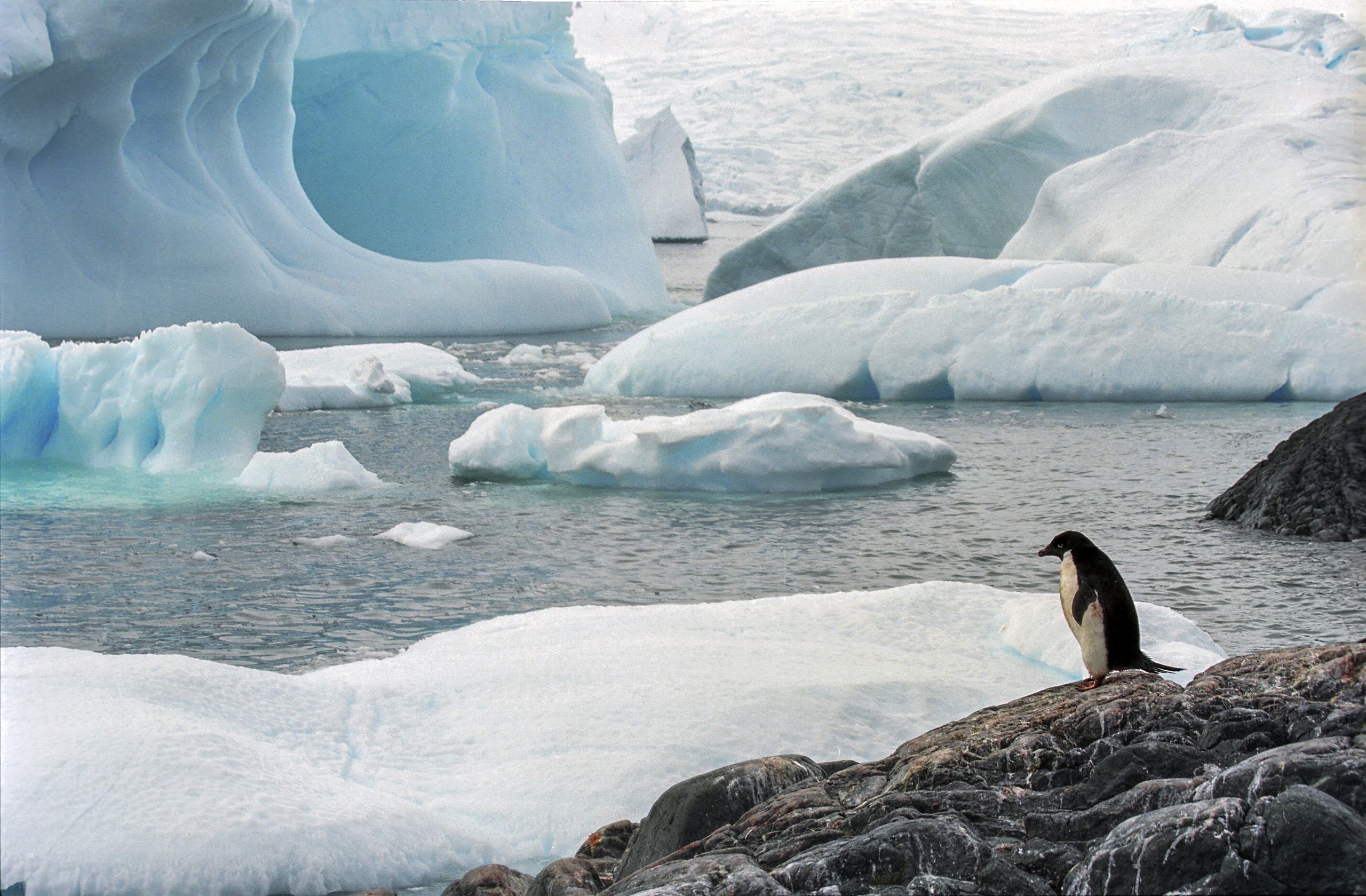
Penguin in Antarctica (Credit: Jerzy Strzelecky, via Wikimedia Commons)
On February 9, the temperature rose to 69 degrees Fahrenheit on the northern Antarctic peninsula, a reading so far above the typical below-freezing summer seasonal highs that even veteran climate-watchers were stunned. A representative of the World Meteorological Organization conceded that it was “the hottest temperature that we have seen over the length of record that we have for Antarctica.”
Climate Change in the Arctic Affects Us – Directly and Indirectly
The Arctic and the Antarctic are both experiencing rapid, extreme changes. Seawater is becoming warmer, and polar ice caps are weakening. In the Arctic Circle, temperatures are rising at three times the average rate of the rest of the world. How do changes in the Arctic and Antarctic affect weather and climate – and other factors – around the rest of the planet?
Melting ice releases not only carbon and carbon dioxide, but also methane, a greenhouse gas that is 23 times more efficient at trapping heat in the atmosphere.
There are numerous effects, ranging from extreme natural events (including droughts and flooding), to sea level and temperature changes, to the possibility of toxins, including deadly viruses, finding their way into the environment as ice and permafrost melt and release gases and other elements into the environment.
5 Ways Polar Melting is Impacting the Earth
Many interrelated natural processes start at the poles and inexorably drift south from the Arctic, and north from the Antarctic, to affect our climate and our lives. Very briefly, these include:
- Melting sea ice and the exposure of ocean water at the poles (the albedo effect).
- Rapid environmental change due to ice melt (“Arctic amplification”).
- Thawing permafrost and the release of greenhouse gases.
- Freshwater runoff mixing with seawater and ocean circulation disruption.
- Changes to the jet stream and air current patterns due to shifts in temperature and air pressure.
It’s important to note that all these processes are simultaneous and interconnected. One affects another, and they all eventually will affect atmospheric conditions around the world. It’s truly a small world, after all, and the polar regions are, in a sense, the “canary in the coal mine” for dangerous and deleterious effects from global warming and climate change. Discussing northern Alaska, the portion within the Arctic Circle, one researcher noted, “The changes observed here provide an early warning system for the rest of the planet.”
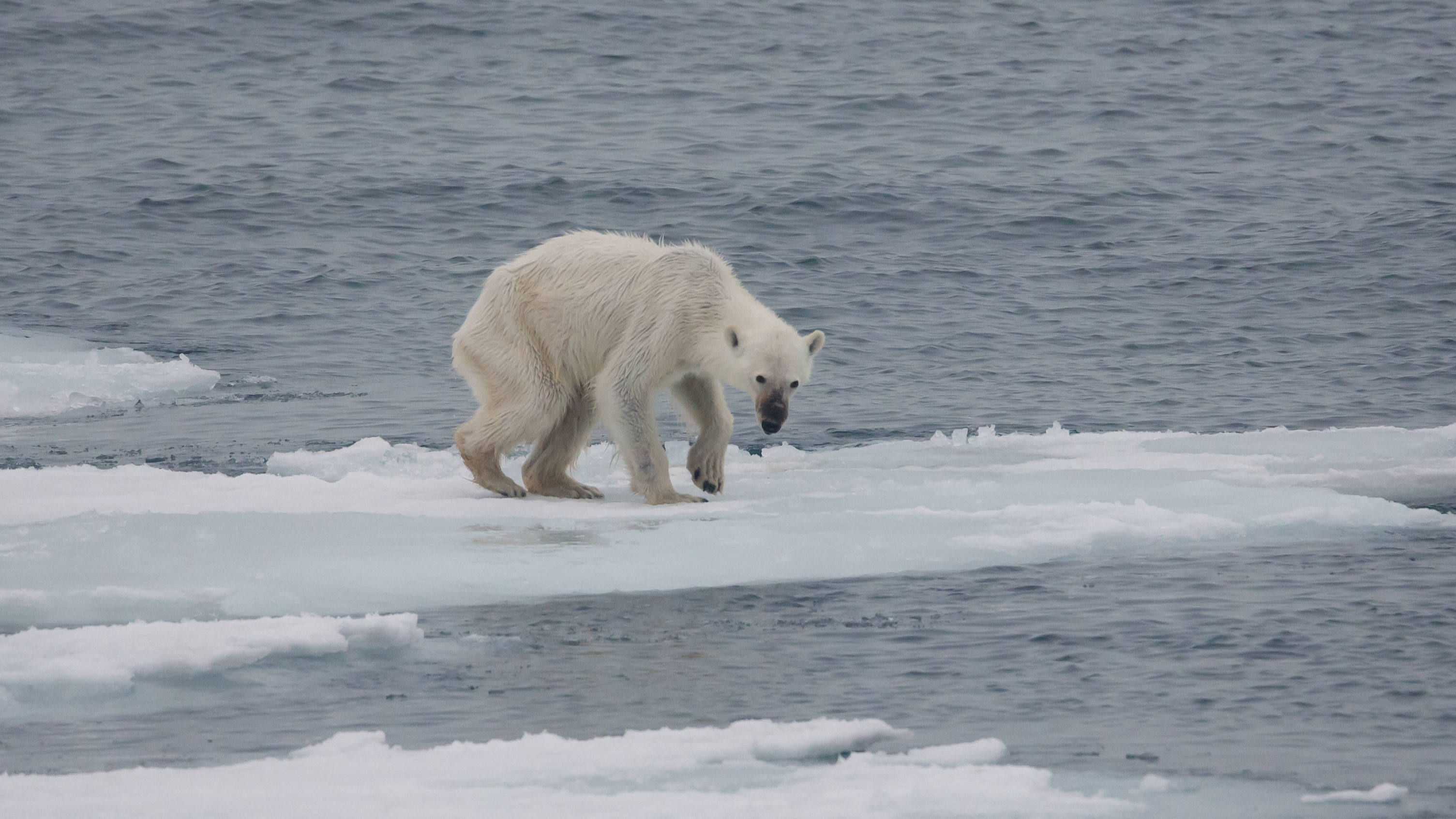
Starving polar bear in the Arctic (Credit: Andreas Weith, via Wikimedia Commons)
Even though these impacts are synchronous and intertwined, let’s consider them separately. And let’s also consider whether what’s happening can be slowed or halted – for our sake and that of the entire planet.
What Is the Albedo Effect?
The normal surface color of the polar ice caps is a frosty white. In the poles' summer months, when the Sun's rays are warmest, the ice cover bounces the sunlight back out into the heavens. This is critically important for the stability of the climate, for that reflected light from an unbroken white surface returns much of the solar heat to space, thus keeping the Arctic and Antarctic cold underneath.
The north shore of Siberia, well within the Arctic Circle, used to be inaccessible due to ice. Now it’s reachable by ship and is currently being exploited for minerals as well as oil.
However, because of rising temperatures at the poles, the white surface is no longer solid and unbroken. In Greenland, for example, the ice sheet that covers Earth’s largest island is shrinking and melting, exposing Greenland’s rocky shores and even creating ponds and lakes on the surface of the ice sheet. The same is true of the ice sheet that covers the continent of Antarctica.
What remains after ice cracks and melts isn’t white. When sea ice melts it exposes the deep blue of ocean water; when permafrost melts, the brown tundra remains. And those colors absorb much more of the Sun’s heating rays than a solid white surface does.
This is called the albedo effect, which describes what happens when the poles absorb and retain more heat than when they were covered by a solid mass of snow and ice. The resultant warming means more ice melts, uncovering more of the surface, and water and land temperatures both rise. Worse, those temperatures stay elevated, even storing heat for the remaining months of the year.
Over the past 150 years, scientists note, the period of full ice and snow cover in the Arctic has been reduced by 19 days. The change is steadily accelerating.
Rising sea and air temperatures correlate with earlier snowmelt, the reduction of sea ice in the Arctic, and shorter months of cold weather in non-summer months. Longer-term effects include changes in the flow of the Gulf Stream, rising sea levels all over the world, and rising sea temperatures, which increase the albedo effect even further.
What Is “Polar Amplification”?
As climate scientists have explained, meteorological processes that happen on Earth tend to be replicated even more intensely at the poles. One example is the albedo effect. Another is the effect of rising temperatures carried by global wind patterns to the poles, causing intensified temperature changes there. This is called polar amplification.
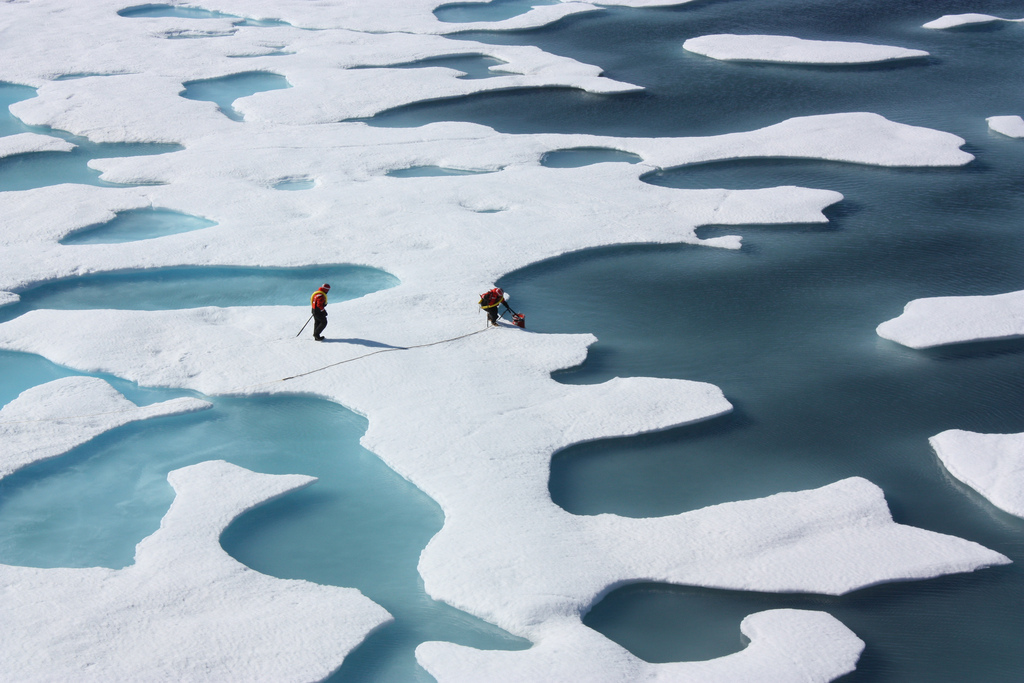
Researchers on Arctic sea ice (Credit: NASA Goddard Space Flight Center)
Another example, drawn from global storm patterns, is found in massive thunderstorms that are common in tropical waters. These storms rise to great heights and are transported by high winds toward polar regions. This process redistributes heat from its tropical origins to the extreme northern and southern latitudes, thereby intensifying heat at the poles.
The Arctic heats at twice the speed of the rest of the planet because of the warming Gulf Stream, hotter summers, and the albedo effect.
Such rapid environmental changes at the poles have been tied to the uptick in extreme weather events in recent years. Some researchers have drawn a line of influence between shifts in water and air currents and events like 2012’s Hurricane Sandy, which ravaged the northeastern coast of the U.S., as well as the so-called “Snowmageddon” winter disasters of 2009 in Canada and 2010 in the U.S.
Methane, CO2, and Other Dangers Trapped in Melting Ice and Permafrost
Of all the dangers associated with melting polar ice, this facet of polar climate change is in some ways the most worrying. Because millennia-old ice packs froze over long periods of time, remnants of what was in the atmosphere then is now captured in the ice – and they are released as it melts. Prominent among the chemical compounds found embedded in ice are the well-known greenhouse gases carbon dioxide (CO2) and methane (CH4).
Of course, CO2 is abundant – humans exhale it, trees absorb it as they grow – but excess amounts of the gas are known to collect in the atmosphere and keep Earth’s radiant heat trapped in the upper atmosphere, unable to escape.
If the release of large amounts of CO2 and CH4 isn’t disturbing enough for you, think about this: An even more insidious danger is present in melting ice. Viruses, bacteria, and other infectious biological agents can easily be released as solid ice turns to liquid and gas. Researchers have determined that bacteria frozen for lengths of time from tens of thousands to millions of years can be revived and become active, and potentially deadly, upon warming.
Permafrost melting and exposing formerly frozen tundra have been implicated in a Siberian boy’s death from anthrax poisoning. Researchers theorize that a 2016 heat wave exposed the carcass of a reindeer that was infected with anthrax from 75 years earlier. The release of the airborne toxin killed the child and 2,000 deer within a matter of weeks.
What else may be released into the surrounding atmosphere by the melting of long-frozen ice sheets and sea ice? The answer is unknown and concerning.
Ocean Circulation’s Effects on the Poles – and Vice Versa
The polar regions serve as vast air conditioning systems to help regulate and stabilize Earth’s climate. Diminishing ice and snow at the poles now portend that the poles may be in the process of transforming from stabilizers of climate to engines of climate change in themselves. One facet of this harbinger of change is the increase in water vapor rising above the poles as a consequence of warming. This is, in part, responsible for potential changes in ocean circulation.
Warm surface water is carried north from the tropics to the Arctic, resulting in a temperate climate for much of Europe. The addition of cold, moist air and freshwater runoff from ice packs into this ocean circulation is projected to disrupt the system within this century.
The result could be disastrous. Cooler water could change the flow of tropical currents and wreak havoc on the weather systems of the North Atlantic and its adjoining land masses. More violent winter storms and weather conditions could impact Europe and North America, and warming climates could become even warmer.
Melting Sea Ice, Jet Streams, and Extreme Weather
The U.S. National Oceanic and Atmospheric Administration (NOAA) estimates that 15 percent of the world’s oceans are covered by sea ice for at least part of the year. As that changes, and there’s less sea ice preserved and more freshwater released, global climate and weather patterns are changing as well.
Warmer conditions at the poles impact the jet streams that flow in both the northern and southern hemispheres. While the overall effect on the planet’s climate will be warming, freakish weather patterns touched off by a jet stream – extreme cold blasts emanating from the poles, drenching rain and flooding, massive droughts – can result. And, in fact, they already have.
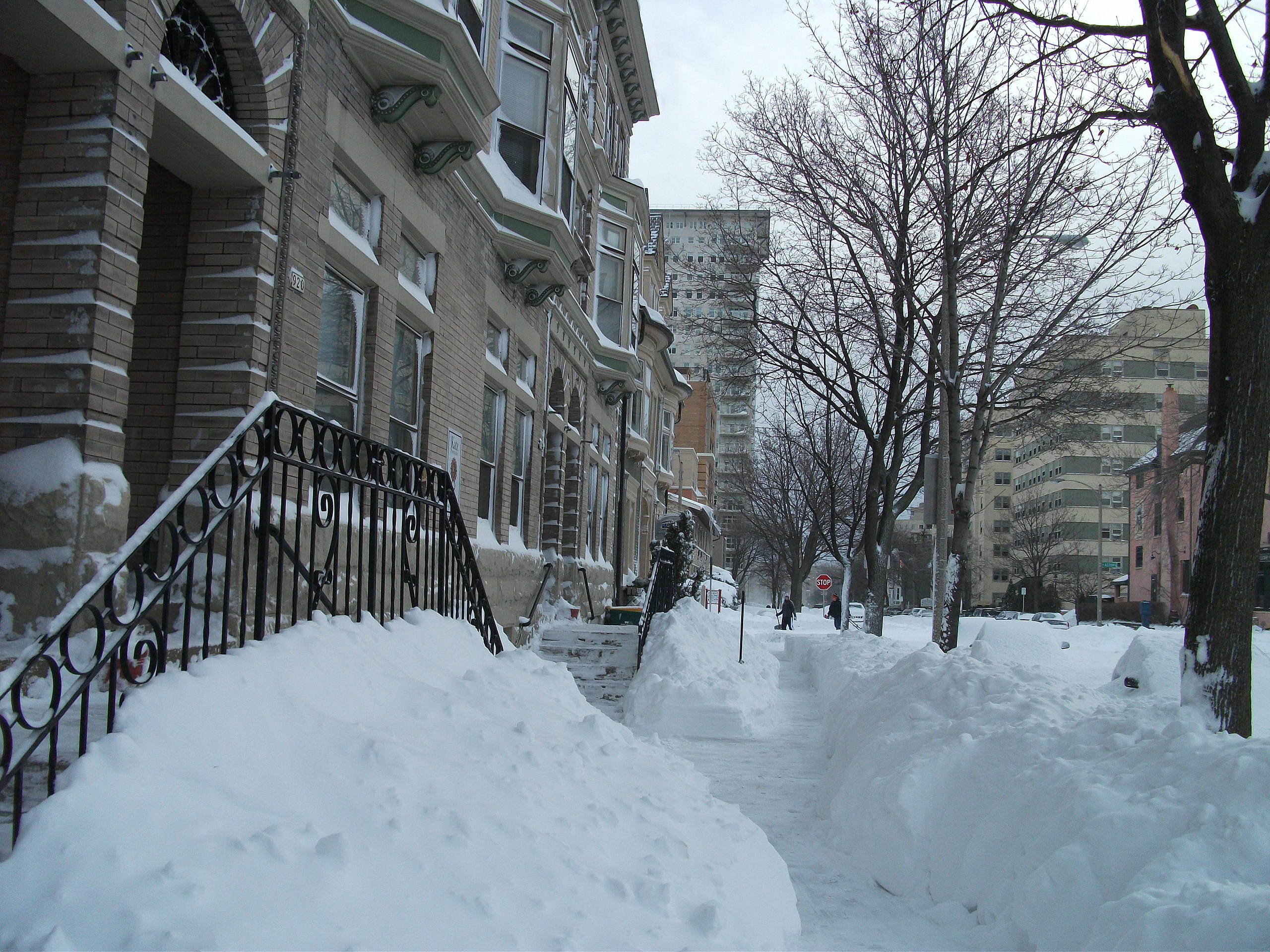
Deep snow in Milwaukee, Wisconsin, February 2011 (Credit: ECP, via Wikimedia Commons)
This was the case in January 2019, when an Arctic vortex unexpectedly dipped southward to the American Midwest. Some areas experienced cold as extreme as 40 degrees below zero, and a windchill of -75 degrees Fahrenheit. As mind-numbing as these temperatures may seem, worse might be yet to come. Experts believe such “weather events” will only increase as the poles continue to warm.
Halting Extreme Changes: Have We Run Out of Time?
Since the 1970s, there’s been an overall 50 percent drop in Arctic sea ice, and summer ice is down by a stunning 75 percent. The former North Pole ice pack was up to 150 feet in depth, but it has weakened and thinned; in summer months, the ice has started to disappear.
As explored in the bracing MagellanTV documentary Arctic Peril, restoring the poles to their pristine, pre-greenhouse gas levels of ice cover cannot be accomplished easily. The documentary features the heroic struggles of one advocate, Lewis Pugh, to bring to the world’s attention the dire consequences of doing nothing to mitigate warming at the poles. Even incremental change, such as limiting carbon emissions into the atmosphere around the globe, can at least slow the pace and potential destructiveness of unchecked climate change.
Perhaps that is our best hope at this time of great upheaval. The determination of individuals and organizations to bring to light the potential – and actual – damage to the poles could bring awareness of the threat and the possibility of positive action to many. But have we passed the tipping point?
One expert who thinks we might have is sea ice specialist and ocean physicist Peter Wadhams, who says we might be left with a “catastrophe for humanity.” Let’s hope his final words on the topic are not the final words for the planet: “The time for action has long since passed.”
Ω
Kevin Martin is Senior Writer for MagellanTV. He writes on a wide variety of topics, including outer space, the fine arts, and modern history. He has had a long career as a journalist and communications specialist with both nonprofit and for-profit organizations. He resides in Glendale, California.
Title image: Dirty sea ice by NASA ICE via Wikimedia Commons.
